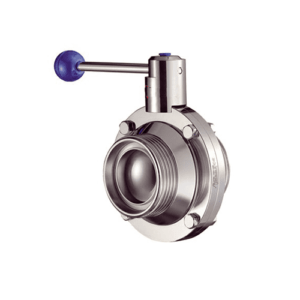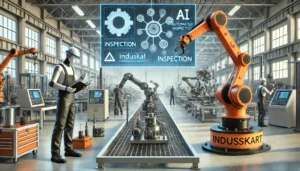The automation of industries has evolved significantly. Previously the industries were run manually, nowadays it’s all about IoT applications. This gradual advancement of automation technologies has improved efficiency, safety and productivity in industries such as oil and gas, manufacturing, logistics, and many others. This evolution shows how humans have evolved through technology, and how it seeks to create a better world.
In every industrialization process, for every task that required sourcing, product construction and processing machining, manually skilled people were deployed, which is the process we today know as manual operations. Such systems required a lot of labor, were inefficient, and had many quality discrepancies, however these systems were the first building blocks of the industry, but required a significant amount of improvement to enhance productivity and safety.
In the oil and gas industry, these manual processes included dangerous occupations like drilling or maintaining equipment, which sometimes caused mishaps. Their manufacture was completed on simple assembly lines that were not automated; their logistics planning and inventory systems were primarily scheduled and controlled by humans. It gave the birth to the concept of shifting focus from manual operations systematically towards mechanizing/futuristically fully automating the entire operation.
Mechanisation and Early Automation
Over the years, many things have changed, and one thing that is the focal point is mechanization, driven by The Industrial Revolution. Because of steam engines and later electricity, machine-powered labor began to take over manual labor. Early automation systems relied on machines rather than humans and carried out their tasks through mechanical or electrical devices such as gears, pulleys, or relays.
This was primarily driven by industries, for example Ford’s assembly line system adapted to the production line which revolutionized the whole process of mass manufacturing whereby humans became less and less important in the working process. The evolution in mechanized drilling rigs helped the oil and gas industry alongside the evolution in logistics that brought about the use of forklifts and the introduction of conveyor belts.
The only context in which most industries operated was early automation which had some rigidity and inefficiencies in it, and the context was without any flexibility or adaptability. Built rigid in nature, systems were unable to perform any complex operation because conditions or circumstances changed.
The Rise of Programmable Logic Controllers (PLCs)
The introduction of PLC’s mid-twentieth century brought about another level of industrial automation, which can also be described as a milestone, because it provided room for so many other opportunities to explore. Industries able to greatly benefit from these PLC’s programmed systems pose no risk to metal relays but strengthen and broaden the room for future advances.
PLCs significantly benefited industry by mechanizing assembly lines and enhancing product uniformity. Likewise, in the oil and gas sector, PLCs worked to automate drilling as well as refining processes, thereby minimizing uncertainties and increasing productivity. Similarly, logistic units embraced PLCs in the best practices of sorting, packaging, and conveyor operability, thus changing warehouse management.
In this respect, PLCs prepared the ground for further intelligent automation as there was a possibility to carry out more complicated tasks and simultaneously use interactions with midrange computers.
Computerised Automation and Robotics
Integration of computers into industrial automation began in the final quarter of the 20th century. There, computerised systems provided unmatched levels of control and precision, and data processing and analysis to industry processes. SCADA systems appeared that enabled monitoring and control of big operations over distances at a time.
This period also saw the introduction of robotics in a big way. Industrial robots such as robotic arms replaced mundane manipulative and dangerous jobs with surgical precision. Industries manufacturing goods turned to robots for welding, painting, and assembling of products to raise the level of goods produced and how safe workers were in the process. Oil and gas companies used robotic inspection systems on pipelines and refineries to cut down human presence in dangerous environments. In logistics, AGVs transformed how materials moved around throughout warehouses.
One such restriction was connectivity and quick decision-making. It was these weaknesses which were overcome by the emergence of the Internet of Things (IoT).
Automation With IoT: The Smart Era
The incorporation of IoT in construction, expansion and even building of factories has elevated automation to an entirely different level. The concept of the IoT makes devices, sensors and machines share data with each other and in real time, hence automating the need of making important and time-sensitive decisions.
Oil and Gas sectors have had a vast improvement with IoT, using it for monitoring the status of equipment, leak detection, and intelligent production through the use of sensors. With IoT being utilized for predictive maintenance, downtimes and risks have greatly decreased. Firms are now adopting smart factories where IoT systems are used for optimizing production lines, inventory monitoring, and quality assurance. The logistics industry also leverages IoT devices in regards to on-demand route sessions, tracking shipments, and managing inventory in the fastest and most efficient way that’s essential for ensuring better supply chains.
There are also other advantages with IoT systems including energy saving ones since these connected devices economize on the degree of resource use. Together with data analytics and artificial intelligence (AI) that is integrated with IoT, the insights that enable the drive for improvement and innovations are at the fingertips.
Benefits Of IoT Enabled Automation
IoT brings accessibility to monitoring system performance and this improves the speed of fixing issues, as well as tackling any which do come up.
Predictive Maintenance: Analytics provides insight into failures that are not yet visible hence preventing those failures allowing to avoid downtime and cut repair costs.
Increased Safety: IoT devices eliminate the possibility of a human being performing dangerous activities, making sure the worker is safe and the risk of an accident is low.
Effective Operations: Less human intervention is required due to automation allowing for more efficient processes resulting in higher output.
Responsibility: Smart applications and devices enhance energy utilisation and lessen wastage which is in harmony with taking care of the environment.
Conclusion
The transformation of industrial processes from being manual to IoT-driven systems is a testament to the power of technology. Every step from mechanisation to the internet of things has resolved one or more deficiencies that pulled the industries backward, forward progress towards efficiency, safety and sustainability. As the industries pursue further developed automatisation, the engagement level of the future remote operations will be tremendous and it will change the way we work, manufacture and supply in the way that all will be interconnected.










